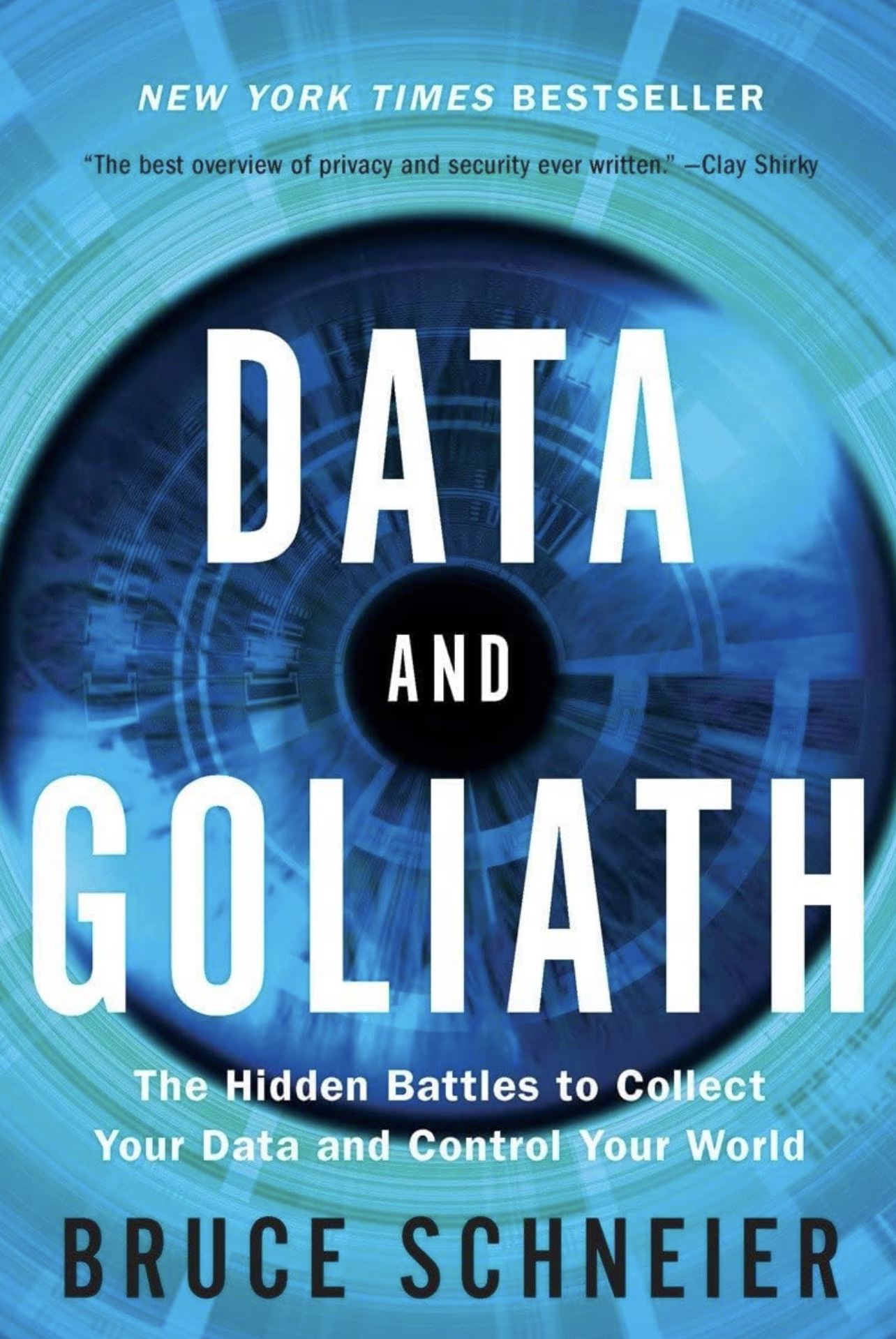← Data and Goliath The Hidden Battles to Collect Your Data and Control Your World
Data and Goliath The Hidden Battles to Collect Your Data and Control Your World Chapter 11. Security

Author: Bruce Schneier Publisher: New York, NY: W. W. Norton & Company. Publish Date: 2015-3 Review Date: Status:📚
Annotations
- Highlight(pink) - Location 2167 as a society we tend to focus on only one threat at a time and minimize the others. Even worse, we tend to focus on rare and spectacular threats and ignore the more frequent and pedestrian ones. So we fear flying more than driving, even though the former is much safer. Or we fear terrorists more than the police, even though in the US you’re nine times more likely to be killed by a police officer than by a terrorist.
-
Highlight(pink) - Location 2173 The NSA repeatedly uses a connect-the-dots metaphor to justify its surveillance activities. Again and again—after 9/11, after the Underwear Bomber, after the Boston Marathon bombings—government is criticized for not connecting the dots.
-
Highlight(pink) - Location 2175 However, this is a terribly misleading metaphor. Connecting the dots in a coloring book is easy, because they’re all numbered and visible. In real life, the dots can only be recognized after the fact.
-
Highlight(pink) - Location 2249 Mass surveillance and data mining are much more suitable for tasks of population discrimination: finding people with certain political beliefs, people who are friends with certain individuals, people who are members of secret societies, and people who attend certain meetings and rallies.
-
Highlight(pink) - Location 2251 Those are all individuals of interest to a government intent on social control like China. The reason data mining works to find them is that, like credit card fraudsters, political dissidents are likely to share a well-defined profile.
-
Highlight(pink) - Location 2253 Additionally, under authoritarian rule the inevitable false alarms are less of a problem; charging innocent people with sedition instills fear in the populace.
-
Highlight(pink) - Location 2302 THE VALUE OF ENCRYPTION
-
Highlight(pink) - Location 2306 There’s an enormous inherent mathematical advantage in encrypting versus trying to break encryption. Fundamentally, security is based on the length of the key; a small change in key length results in an enormous amount of extra work for the attacker. The difficulty increases exponentially. A 64-bit key might take an attacker a day to break. A 65-bit key would take the same attacker twice the amount of time to break, or two days.
-
Highlight(pink) - Location 2310 And a 128-bit key—which is at most twice the work to use for encryption—would take the same attacker 264 times longer, or one million billion years to break. (For comparison, Earth is 4.5 billion years old.) This is why you hear statements like “This can’t be broken before the heat death of the universe, even if you assume the attacker builds a giant computer using all the atoms of the planet.”